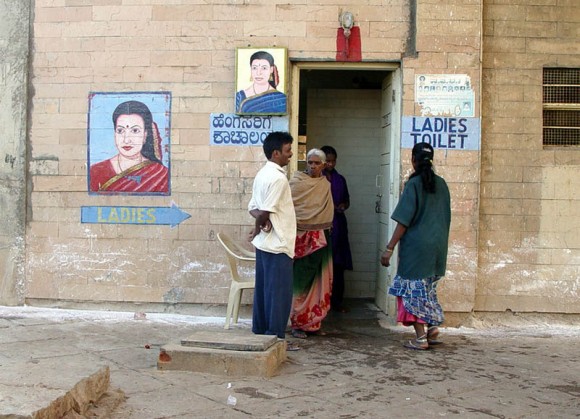This photo taken last year from a street market in Bangalore. For me it highlights the importance of context in understanding.
Lets imagine you are wandering around the street market and are looking for a toilet – you see this building and being non-literate you don’t understand any of the words written in Hindi or English on its walls (the issue is not this straight forward but bear with me).
Relying on what you see before you, ask yourself:
How sure are you that this is indeed a toilet?
What is the cost of walking into this building if it is not a toilet?
Indeed, what is cost of not trying?
In this context the cost may range from nothing, to some social embarrassment, to perhaps walking into the offices of the mustachioed local political candidate – whose wonderful mural is on the building. There may also be a cost in not going to the toilet, and there may be viable alternatives like peeing on a nearby tree. It all boils down to risk and the consequences of making the wrong decision.
The real world contains wonderfully rich cues that can be drawn upon to make the decision whether to go in, or not. In this context these cues include: the fact that there is a stream of men going in and out of the building alone; that there is a similar building with a picture of a woman next door; your sense of smell (trust me on this); perhaps even that you’ve used this kind of building before. You could even ask someone in the proximity.
For mobile phone user’s the challenge is that the phone user interface lacks many of these rich cues. For non-literate users in particular the consequence of not being 100% confident of what will happen next can be too high to just experiment and explore. Choosing that right soft key may start the game application. But equally it could delete the application. Or maybe it makes an expensive phone call. Or changes the carrier settings. How do you know? And are you willing to take the risk to find out?
As mobile phones are held in the hands of the next billion users, with their very different cultural backgrounds, language skills, education, mental models and (user) experiences designers need to work hard to understand the issues of context, risk & consequences of these new users.

